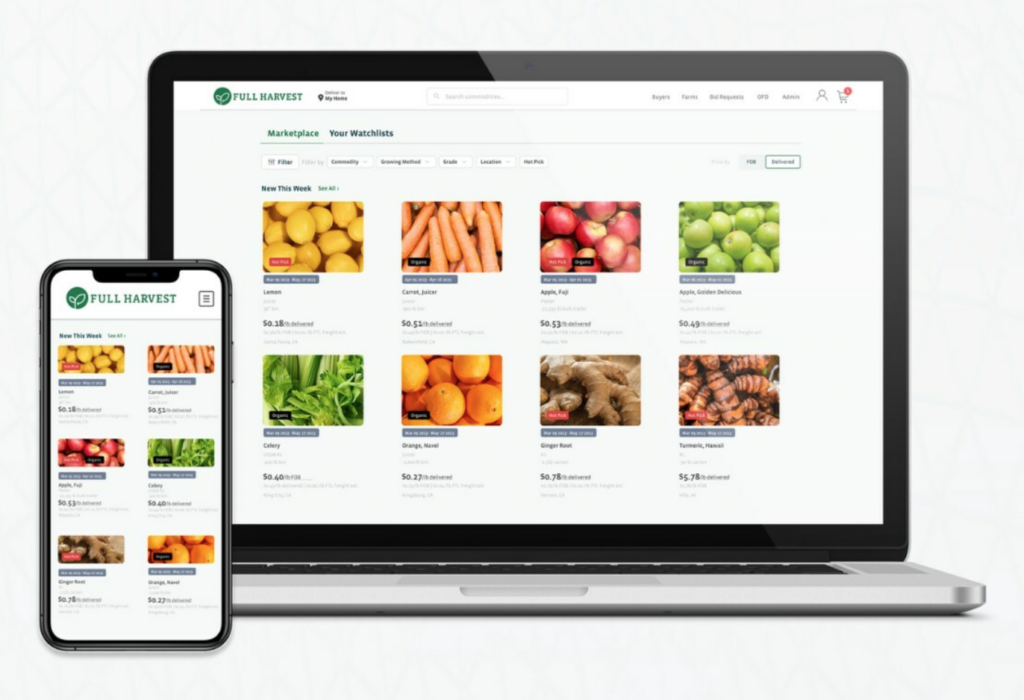In the US, food waste is a pervasive problem, with an estimated 30 to 40 percent of the country’s food supply going to waste each year. This amounts to around 133 billion pounds of food, worth an estimated $161 billion, being discarded annually. To combat this issue, companies like Full Harvest and others have emerged to sell surplus or imperfect produce that would otherwise be thrown away.
Founded in 2015, Full Harvest is a business-to-business (B2B) marketplace that connects farmers with food and beverage companies to sell their surplus or imperfect produce. The company’s platform enables farmers to sell their entire harvest, including fruits and vegetables that would typically be rejected by traditional retailers due to imperfections in shape, size or color.
The company recently expanded its online marketplace to include all US Department of Agriculture (USDA) Grade 1 produce in addition to surplus produce. This expansion will make the company’s online produce market more efficient and expand its reach to various commercial buyers and sellers, including retailers and food service companies.
Related: Are Best Before Dates on Food Packaging to Blame for Food Waste?
By using Full Harvest, farmers can reduce their waste and increase their profits, while food and beverage companies can access high-quality produce at a lower cost. Its platform operates using digitization, with a user-friendly interface that streamlines the buying and selling process. Farmers can easily upload their available produce to the platform, which is then matched with buyers in need of that specific product. This process enables the company to offset food waste faster by ensuring that surplus produce is sold before it goes bad.
“Everything edible should be consumed,” said Christine Moseley, founder and CEO of Full Harvest, in a press release. “We are on a mission to eliminate food waste in the produce ecosystem and create a more sustainable produce industry. While imperfect and surplus produce was an important first step, the entire produce industry needs to move online to maximize efficiency and eliminate waste.”
However, Full Harvest isn’t the only company that is using digitization to address the issue of food waste. Imperfect Foods, for example, is a direct-to-consumer (DTC) subscription service that delivers “ugly” produce, along with other surplus or imperfect food items, to customers’ homes. The company’s website and app make it easy for customers to customize their weekly boxes and manage their subscriptions.
Misfits Market is another DTC subscription service that delivers surplus and imperfect produce as well as other grocery items to customers’ homes. Like Imperfect Foods, Misfits Market uses digitization to streamline the ordering and delivery process, making it easy for customers to access and purchase high-quality produce that might otherwise go to waste.
Food waste is a complex issue with far-reaching environmental and economic consequences. In addition to the environmental impact of wasted resources and greenhouse gas emissions, food waste also has social implications, contributing to food insecurity and hunger in many communities. Addressing this issue requires a multi-faceted approach that includes both individual and systemic changes.
Companies like Full Harvest, Imperfect Foods and Misfits Market are doing their part to reduce food waste and promote sustainability through digitization. By using technology to connect farmers with buyers, Full Harvest is creating a more efficient and sustainable food system that benefits everyone involved. As the issue of food waste continues to gain attention, it is likely that we will see more companies using digitization to address this ongoing problem.












Join or login to leave a comment
JOIN LOGIN